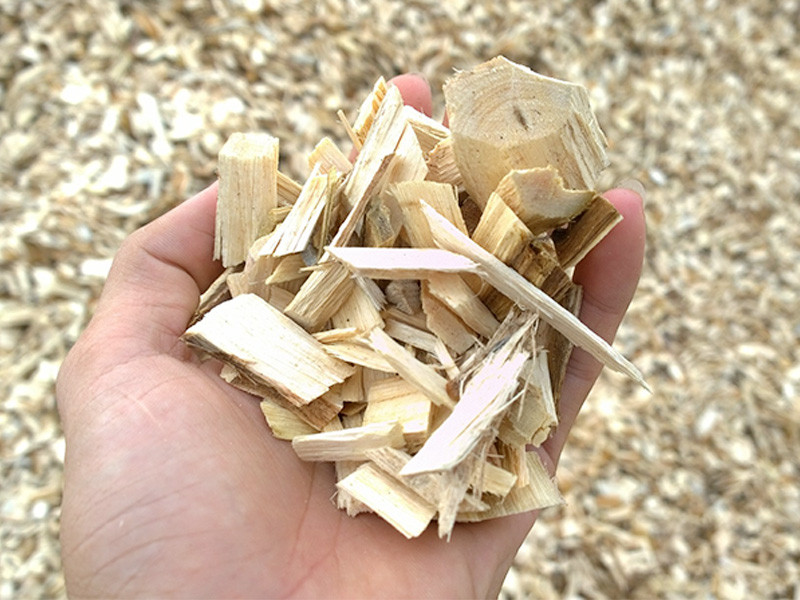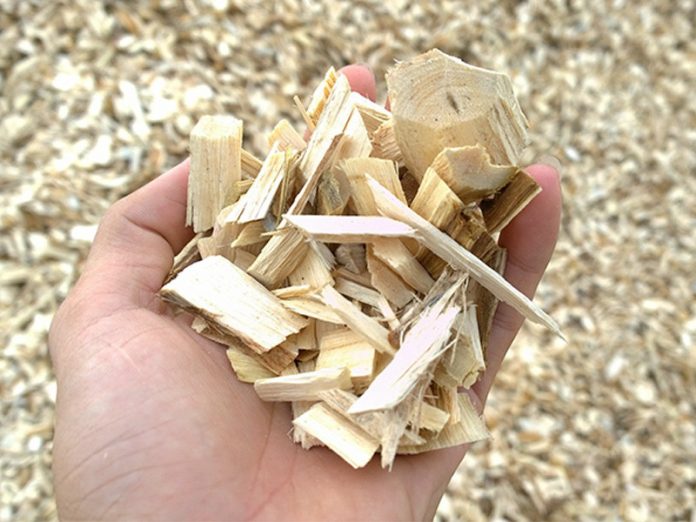The Vietnamese Forestry and Timber Association’s 2023 Wood Industry Report shows that 2023 was a challenging year for Vietnam’s wood industry as consumers tightened their spending. However, wood chip and compressed wood exports still generated nearly $2.9 billion.
Specifically, Vietnam exported nearly 14.42 million tons of wood chips, with a value of $2.22 billion, accounting for 16.8% of the total export turnover of the wood industry. Compared to 2022, wood chip exports decreased by 8.8% in volume and 20.4% in value, but increased by 5.9% in volume and a significant 27.7% in value compared to 2021.
Vietnam’s wood chip products were exported to 13 markets. China and Japan are the two largest importers, accounting for 92.4% of total output and 92.2% of total export value.

Wood chip and compressed wood exports reached nearly $2.9 billion. Illustrative photo: Green Mech |
As for compressed wood, Vietnam exported 4.67 million tons in the past year, earning nearly $680 million, a decrease of 4.3% in volume and 13.7% in value compared to 2022, accounting for 5.2% of the total export turnover of the wood industry.
Vietnam’s compressed wood products were exported to 22 countries and territories in 2023. Japan and South Korea remain the two largest customers of Vietnamese compressed wood.
In particular, Japan imported over 2.8 million tons of compressed wood from Vietnam, with a value of $438 million, an increase of 12.4% in volume and 14.3% in value compared to 2022. In contrast, South Korea only imported over 1.7 million tons of compressed wood, with a value of nearly $214 million, a decrease of 24.5% in volume and 43.3% in value compared to 2022.
In terms of the market for these products this year, Mr. To Xuan Phuc, Executive Director of the Timber Trade Policy Program at Forest Trends, believes that there are still many opportunities to boost compressed wood exports to the Japanese market. As for the compressed wood market in South Korea, it is expected to remain stable in the near future due to the country’s importers prioritizing cheap sources of compressed wood.
Regarding wood chips, according to Mr. Phuc, the import demand from China is expected to continue to decline in the near future, leading to a decrease in wood chip export prices in this market.
According to the Forestry Department, in 2023, the entire industry was able to exploit about 19 million cubic meters of logs. This is a major input material for wood chip and compressed wood production.
In addition, by-products of the processing and manufacturing industry such as wood scraps, sawdust, bark, and wood chips are also used to produce compressed wood and wood chips.
At the beginning of this year, the wood industry’s exports recovered strongly. In the past month, wood chip exports reached $217.5 million, an increase of 21.7% compared to the same period last year; and compressed wood exports reached $73.5 million, an increase of 24.1%.
Experts predict that there is still great potential and room for growth in wood chip and compressed wood. In particular, compressed wood exports could reach $1 billion in the near future. Businesses should consider investing in building raw material sources to ensure a stable supply for production and export.
Tam An









































